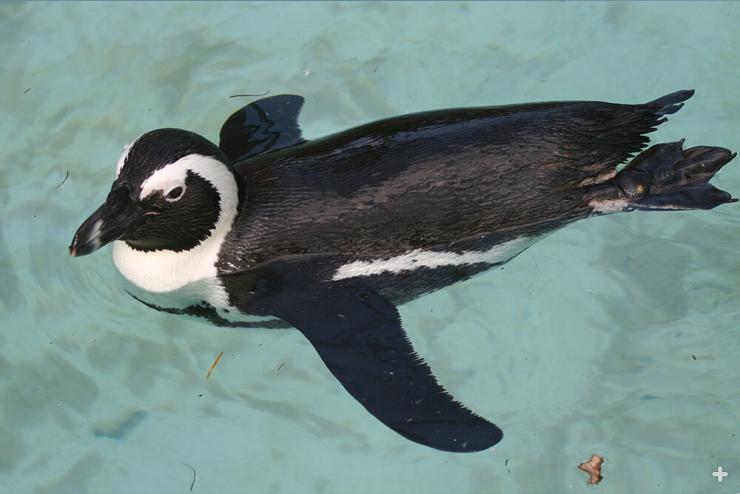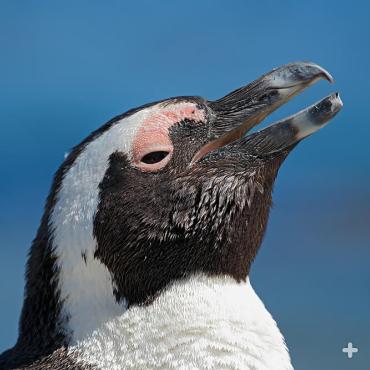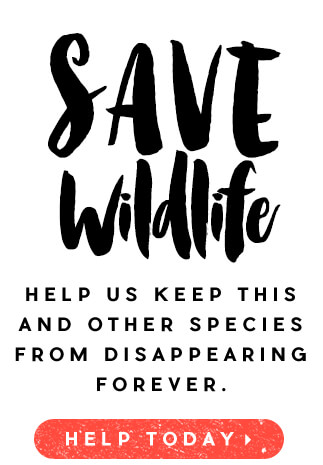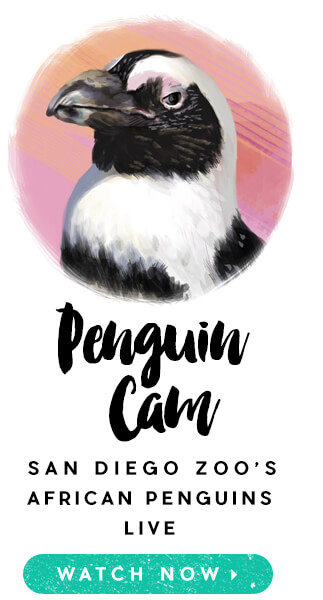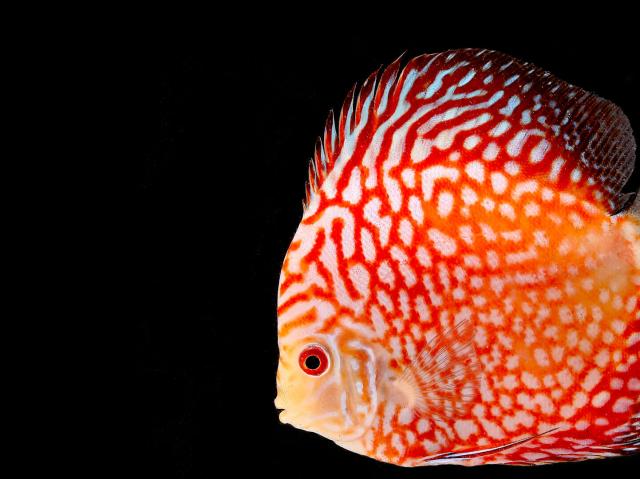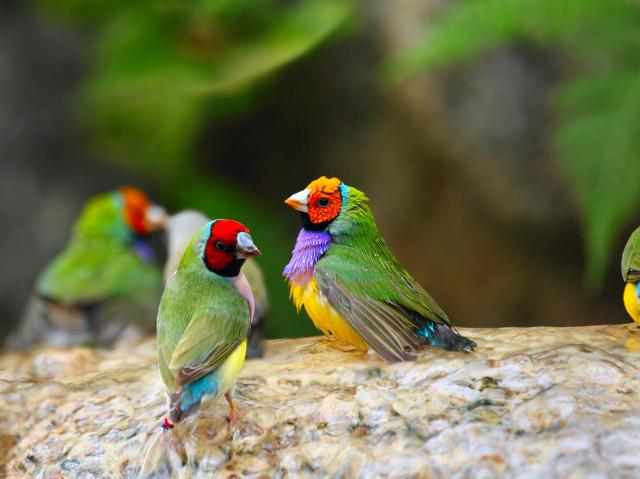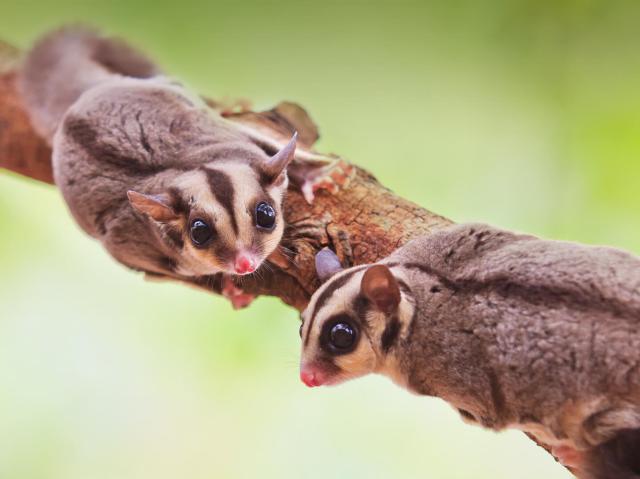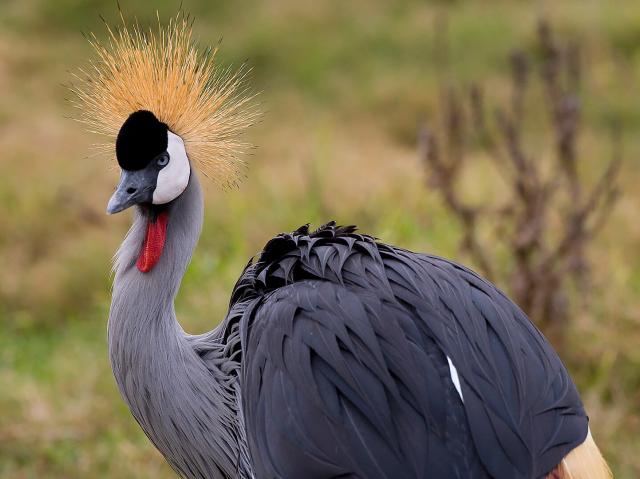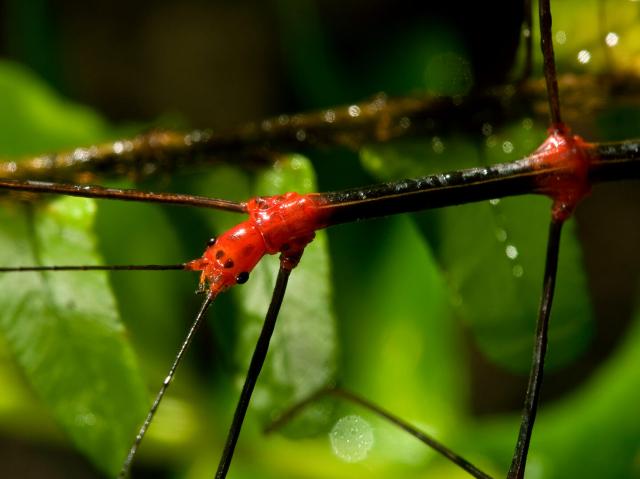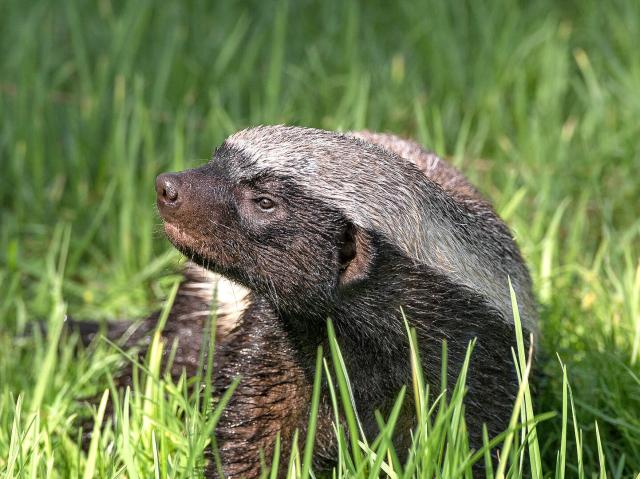
African Penguin

- Class: Aves (Birds)
- Order: Sphenisciformes
- Family: Spheniscidae
- Genus: Spheniscus
- Species: demersus

ABOUT
Critically Endangered African penguins live along the rocky shoreline of South Africa, swimming in cold currents. While they don’t live in snow and ice like some other penguin species, they are still covered in an array of black, white, and gray dense, waterproof feathers that keep them dry and warm in the cold waters. They also have a number of dot-like markings flecked across their white chests. These flecks help to individualize each penguin, as each penguin's feather pattern is as individual as a person's fingerprints. African penguins have a distinct, sharply pointed beak and black feet. African penguins are one of the smallest penguin species. Males are generally slightly larger than their female counterparts.

African penguins communicate with one another through vocalizations and body language. Each individual has its own unique vocalization that distinguishes it from others. They use three different types of calls: a bray, used to attract a mate; a yell, used to defend their territory; and a haw, used by mates to locate each other when one is on land and one is at sea. When a penguin is feeling aggressive, it communicates through body language like gaping, pointing its bill, pecking, and bill-jabbing.
One of its most distinctive features is a patch of bare skin above each eye, which helps them stay cool in high temperatures in South Africa. The hotter a penguin gets, the more blood flows to these areas, where it is cooled by the surrounding air.
SaveSave
SaveSave
SaveSave
HABITAT AND DIET
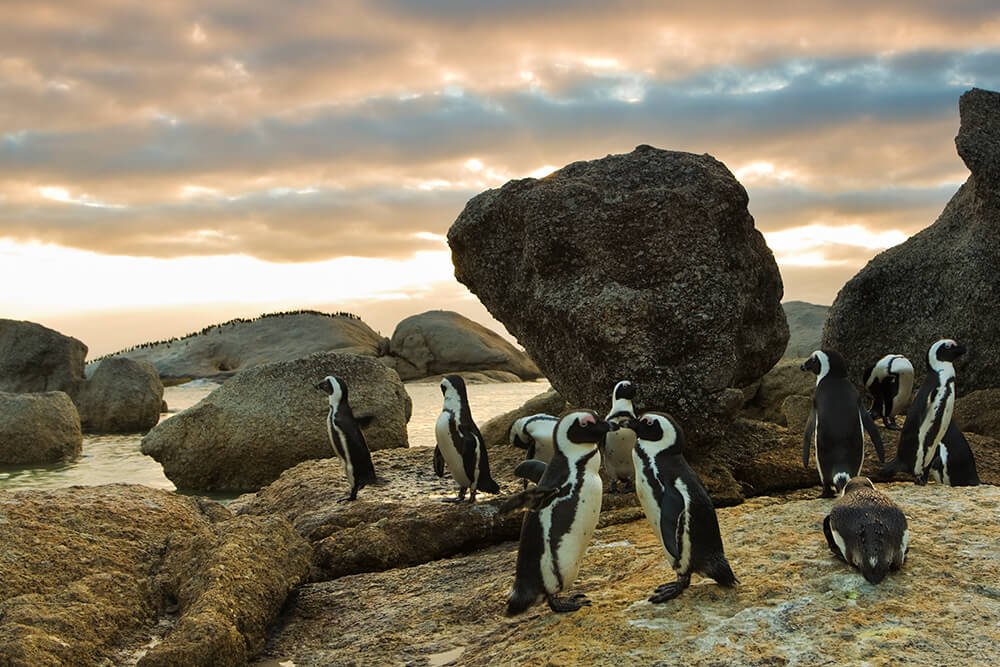
African penguins live in large groups called colonies along the southwestern rocky coast of Africa from Namibia to Port Elizabeth, and many of the surrounding islands. The largest colony lives on the Dyer Island Nature Reserve in South Africa. Penguins build nests in sand or deposits of their excrement, called guano, or under bushes or rocks. Shelter gives them protection from the harsh sun during the hot African days.
Being fast swimmers allows them to catch a variety of prey from the sea, including sardines, anchovies, squid, and crustaceans. These little penguins can hold their breath for more than two minutes and dive over 400 feet deep! A penguin may eat up to one pound of food or 14 percent of its body weight per day. At the San Diego Zoo, penguins eat sardines, capelin, and night smelt. They swallow their fish whole!
FAMILY LIFE
African penguins reach sexual maturity around four years of age. At this time, a male will court a female with a donkey-like bray. Once a male is accepted by a female, the pair continue to bond for the rest of the season—and they sometimes remain bonded for future mating seasons, but not always. The female digs a burrow where she lays two eggs. Both parents take turns incubating the eggs for up to 40 days. Once the chicks hatch, the parents share the responsibility of keeping the chicks warm and fed for the first 30 days. Once they reach a month old, the chicks are left for short periods with other chicks while their parents hunt for food. The chicks huddle together in large "nursery groups" to keep warm and help protect each other from predators. Juveniles then leave the colony when they are around four months old and have developed their juvenile plumage.
CONSERVATION
African penguin populations have plummeted and they are now Critically Endangered. While breeding pairs may have numbered in the millions in the early 20th century, less than 20,000 individuals remain today. Their populations continue to rapidly decline, primarily from food shortages caused by overfishing and climate-related shifts in prey availability.
San Diego Zoo Wildlife Alliance works with global partners to protect African penguins through our Oceans Conservation Hub. We collaborate with the Southern African Foundation for the Conservation of Coastal Birds (SANCCOB) to strengthen populations disrupted by oil spills and low fish availability, and help to rescue, rehabilitate, and reintroduce penguins back into their native habitats.
By joining San Diego Zoo Wildlife Alliance as an ally for wildlife, you help save species worldwide.
LIFE SPAN
18-22 years on average
YOUNG
Number of eggs laid: 2 per clutch
Incubation period: 38-41 days
Age at fledge: 70-80 days
Age of maturity: 3 to 4 years
SIZE
Height: 24 to 27 inches (61 to 69 centimeters)
Weight: 4.4 to 11 pounds (2 to 5 kilograms)
FUN FACTS
These little penguins can hold their breath for more than two minutes and dive over 400 feet deep!
African penguins can swim at speeds up to 15 mph (5.4 mps) when hunting. The average person swims less than one-third of that speed.


